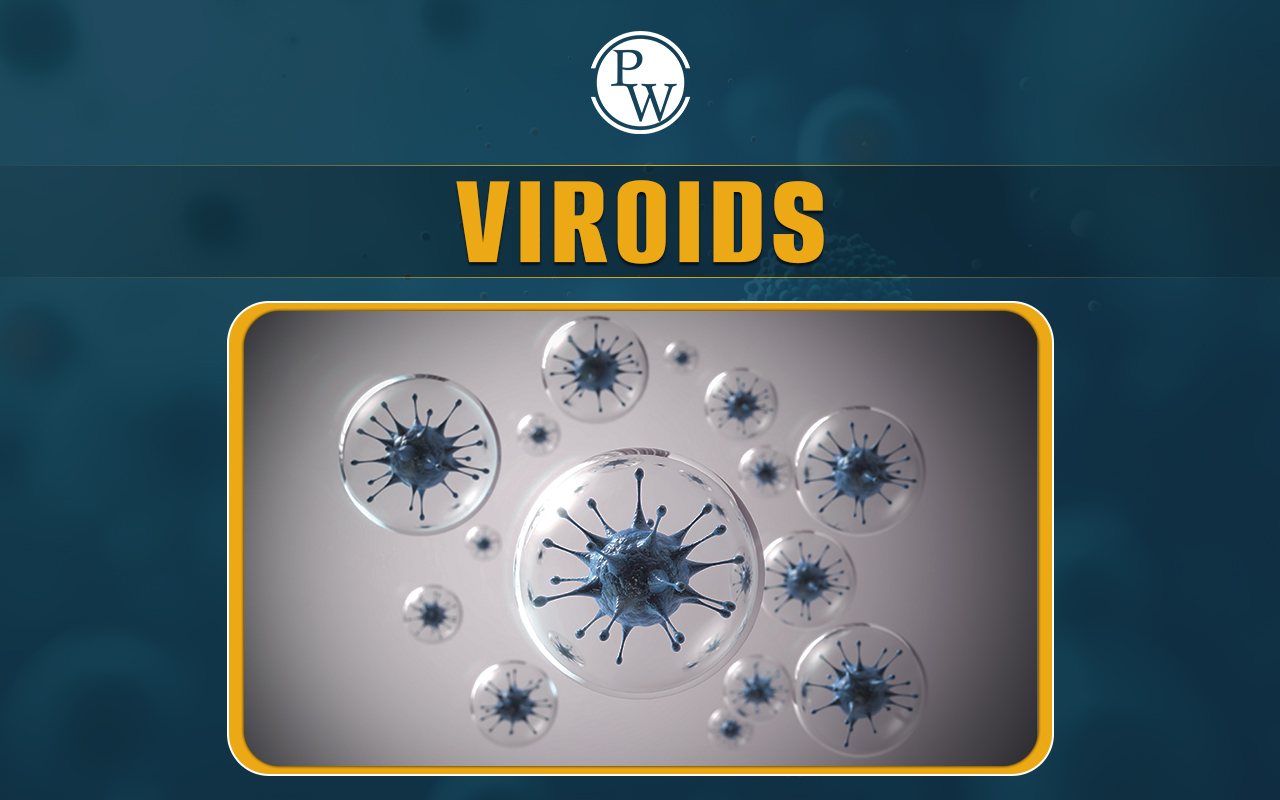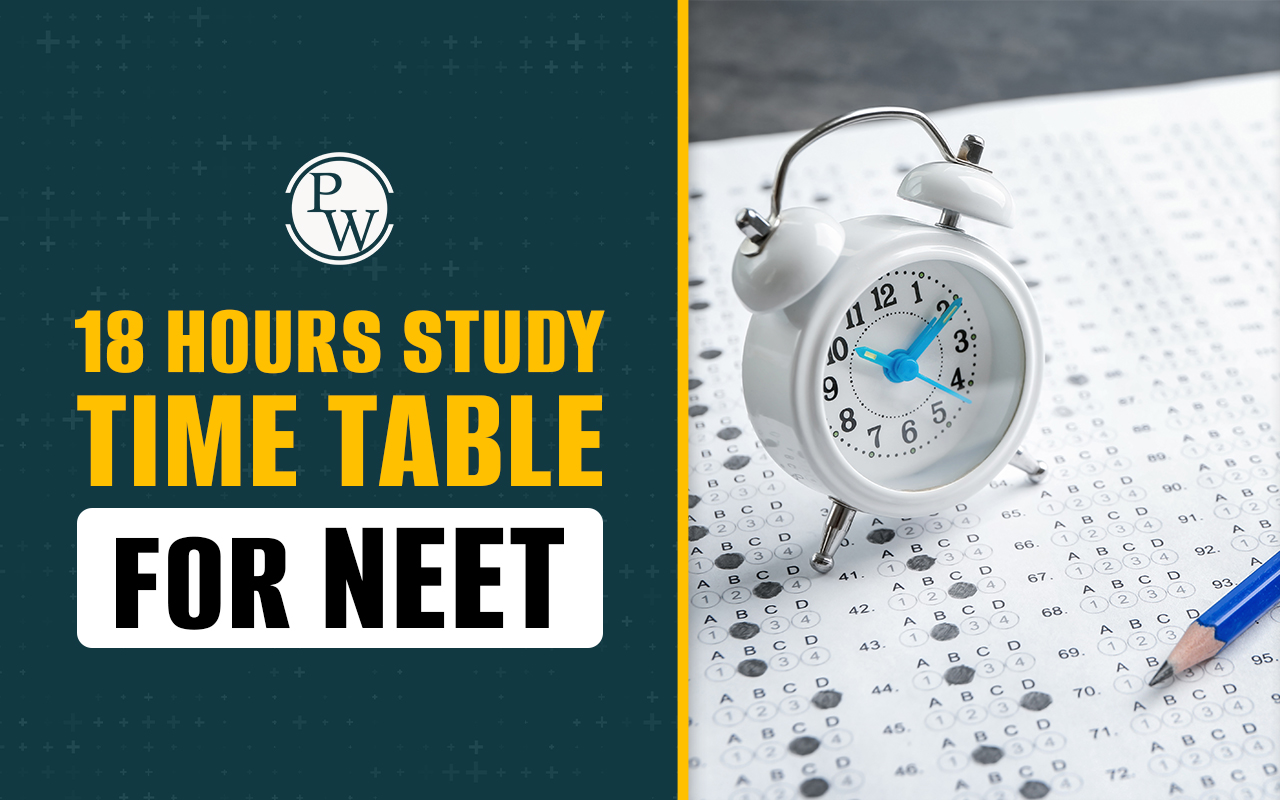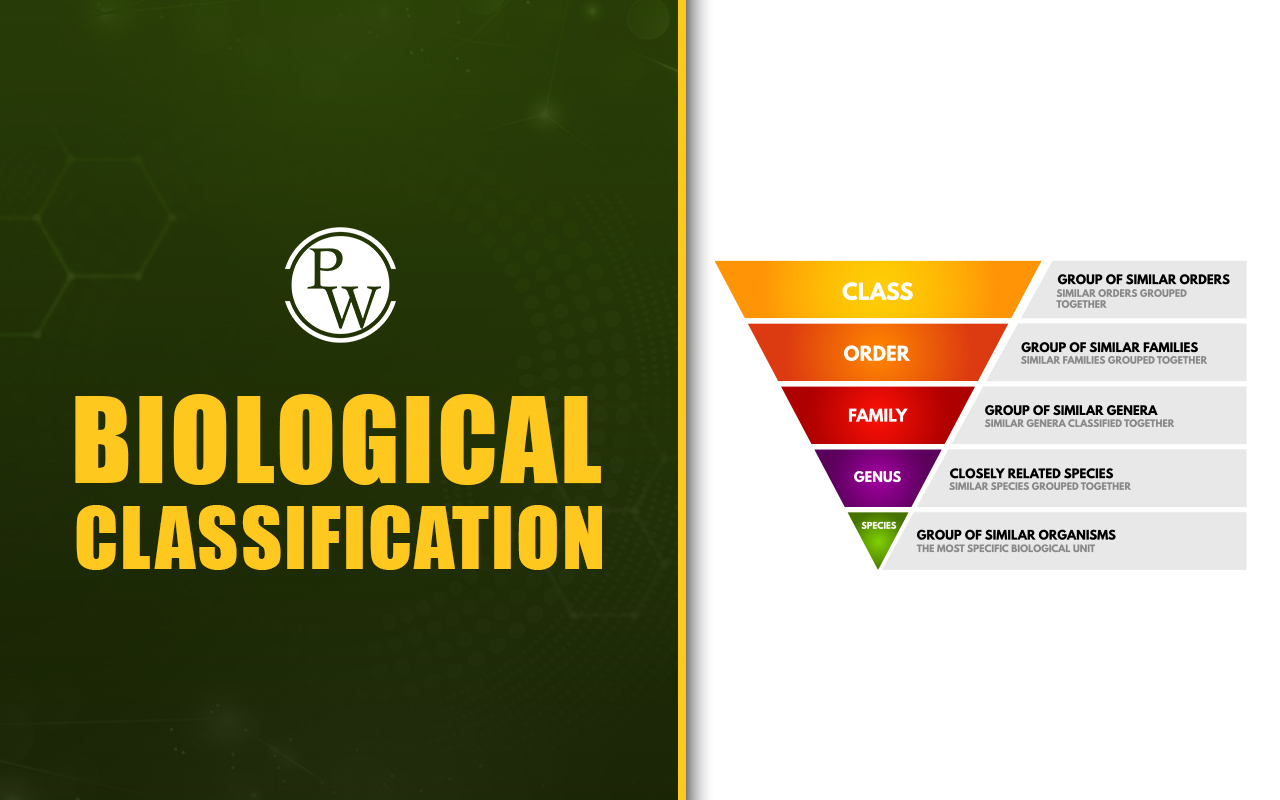

Viroids are unique infectious agents that primarily infect plants, causing various diseases. Unlike viruses, viroids lack a protective protein coat and contain only a short strand of circular RNA. Understanding viroids is crucial for NEET biol ogy , especially when studying plant pathology and the diversity of infectious agents.
Definition of Viroids
Viroids are infectious RNA molecules, smaller than viruses , that cause diseases in plants. They are among the smallest known agents of infection and consist solely of a single, circular RNA strand without any protein coating. Viroids do not infect animals or humans and are highly specific to plant hosts.Discovery of Viroids
The concept of viroids was first introduced in 1971 when Theodor O. Diener discovered the Potato Spindle Tuber Viroid (PSTVd), which affects potatoes. This discovery demonstrated that infectious agents could exist without the protein structure that characterizes typical viruses.Structure of Viroids
Viroids differ significantly from viruses in their structure. Unlike viruses, viroids are composed solely of short strands of circular, single-stranded RNA, without any protective protein coat. This simple structure makes them some of the smallest known infectious agents that cause disease. Viroids primarily infect plants , causing serious agricultural losses each year. Some commonly affected crops include potatoes, tomatoes, cucumbers, and coconut palms. Infected plants provide the cellular machinery needed for viroid replication within organelles like the nucleus or chloroplasts. Lacking protein-coding capabilities, viroids replicate through RNA–RNA transcription and infect plant tissues via cell wall damage, leading to severe crop impact.Characteristics of Viroids
The unique features of viroids make them distinct from other pathogens. Here are some key characteristics:- Viroids consist solely of RNA.
- They are extremely small and infect only plants.
- Viroids are among the smallest known infectious agents.
- They have a low molecular weight and a unique RNA structure.
- Viroids replicate within the host cell, causing changes that can eventually kill the plant.
- They are classified into two families: Pospiviroidae, which replicate in the nucleus, and Avsunviroidae, which replicate in the chloroplast.
- Viroids can move within plant cells through structures called plasmodesmata and travel long distances through the plant's phloem.
Types of Viroids
Viroids are classified into two primary families: Pospiviroidae and Avsunviroidae:- Pospiviroidae : The Pospiviroidae family includes the type species Potato Spindle Tuber Viroid (PSTVd) and comprises five genera with over 24 species. This family is characterized by members that possess five major domains in their secondary structures and undergo asymmetric rolling-circle replication in the nucleus, typically lacking ribozyme activity. The Pospiviroidae family can infect a wider range of hosts , including both monocot and dicot plants . This classification highlights the diverse nature and infection patterns of viroids across different plant species.
- Avsunviroidae : The Avsunviroidae family features the type species Avocado Sunblotch Viroid (ASBVd) and consists of two genera with three total species. These viroids are known for their branched secondary structures and utilize a chloroplast-based symmetric rolling-circle replication mechanism, which includes ribozyme activity. Viroids from the Avsunviroidae family are restricted to infecting dicotyledonous plants, which can be either herbaceous or woody.
Viroid Diseases
Viroids cause several plant diseases, including cucumber pale fruit, citrus exocortis, and chrysanthemum stunt. These infections spread through cuttings, tubers, and other seed propagation methods, as well as through contaminated tools. Viroid-like particles also lead to hepatitis D in humans. Symptoms of viroid infection in plants include stem necrosis, stunted growth, distorted leaves and fruits, and eventually plant death. Viroids infect various plants, including coconut and apple trees. The potato spindle tuber viroid (PSTVd) results in elongated and cracked tubers, causing significant crop losses. Examples of Viroid Disease : Citrus Gummy Bark Viroid, Grapevine Viroid, Dapple Peach Fruit Disease Viroid, Potato Spindle Tuber Viroid (affecting potatoes), Cucumber Pale Fruit Viroid, Dapple Plum and Peach Fruit Disease Viroid.Differences Between Viroids and Viruses
The table below compares viroids and viruses, focusing on their structure, host types, and unique features. This distinction is crucial for understanding how these infectious agents impact their respective hosts differently.| Feature | Viroids | Viruses |
| Genetic Material | RNA only, free of protein coat | DNA or RNA, enclosed in a protein coat (capsid) |
| Size | Smaller than viruses | Generally larger than viroids |
| Infect Host Types | Primarily infect plants | Infect various types of organisms, such as animals, plants, and bacteria. |
| Protein Coat | Absent | Present, known as the capsid |
| Replication | Can only replicate within a plant host cell | Requires a host cell to replicate, can infect various cell types |
| Structure | RNA molecule without any protein covering | Nucleoprotein particle, consisting of genetic material and a capsid |
| Infectious Nature | The smallest infectious agents that primarily attack plants | Tiny infectious agents that infect various types of living cells |
MCQs of Viroids
Q1. Which disease is caused by viroids?
- Leaf curling disease
- Potato spindle tuber disease
- Dwarfing disease
- All of these
Q2. In 1971 T.O. Diener discovered a new infectious agent that was smaller than viruses;
(i) it causes potato spindle tuber disease.
(ii) it is free RNA.
(iii) molecular wt. of RNA is low.
The above statements are assigned to;
- viruses.
- viroids.
- virulent.
- mycoplasma.
Q3.. Viroids differ from viruses in having;
- DNA molecules with protein coat.
- DNA molecules without protein coat.
- RNA molecules with protein coat.
- RNA molecules without protein coat.
Answers of MCQs of Viroids
Ans1. Potato spindle tuber disease,| NEET Exam Important Links | |
|---|---|
| NEET Biology Syllabus | NEET Biology Diagrams |
| NEET Biology MCQ | NEET Biology Chapter wise Weightage |
| NEET Biology Notes | NEET Previous Year Question papers |
Viroids FAQs
Q. Who discovered viroids?
Ans. Viroids were discovered by Theodor O. Diener in 1971. He identified them as the causal agent of the potato spindle tuber disease, marking the first recognition of viroids as distinct infectious agents.
Q. What is a viroid?
Ans. A viroid is a small, infectious particle made of circular RNA that lacks a protective protein coat. Viroids are the smallest known agents of infectious disease and are unique in that they infect plants exclusively, disrupting normal cellular functions.
Q. Viroids differ from viruses in having?
Ans. Viroids differ from viruses in having only RNA without any protein coat. This simpler structure means viroids are typically smaller and only infect plants, unlike viruses that can infect a broader range of hosts.
Q. What is the structure of a viroid?
Ans. Viroids have a very simple structure, consisting of a short, circular strand of RNA without a surrounding protein coat. This lack of a protein shell distinguishes them from viruses and limits their ability to infect beyond plant cells.
Q. What is the difference between viruses and viroids?
Ans. The main difference lies in their structure and host range. Viruses contain nucleic acids (either DNA or RNA) within a protein coat, allowing them to infect animals, plants, and bacteria. Viroids, on the other hand, contain only RNA, lack a protein coat, and exclusively infect plants.
Q. What is an example of a viroid?
Ans. An example of a viroid is the Potato Spindle Tuber Viroid (PSTVd), which causes the spindle tuber disease in potatoes, leading to stunted growth and poor crop yield.
🔥 Trending Blogs
Talk to a counsellorHave doubts? Our support team will be happy to assist you!

Free Learning Resources
PW Books
Notes (Class 10-12)
PW Study Materials
Notes (Class 6-9)
Ncert Solutions
Govt Exams
Class 6th to 12th Online Courses
Govt Job Exams Courses
UPSC Coaching
Defence Exam Coaching
Gate Exam Coaching
Other Exams
Know about Physics Wallah
Physics Wallah is an Indian edtech platform that provides accessible & comprehensive learning experiences to students from Class 6th to postgraduate level. We also provide extensive NCERT solutions, sample paper, NEET, JEE Mains, BITSAT previous year papers & more such resources to students. Physics Wallah also caters to over 3.5 million registered students and over 78 lakh+ Youtube subscribers with 4.8 rating on its app.
We Stand Out because
We provide students with intensive courses with India’s qualified & experienced faculties & mentors. PW strives to make the learning experience comprehensive and accessible for students of all sections of society. We believe in empowering every single student who couldn't dream of a good career in engineering and medical field earlier.
Our Key Focus Areas
Physics Wallah's main focus is to make the learning experience as economical as possible for all students. With our affordable courses like Lakshya, Udaan and Arjuna and many others, we have been able to provide a platform for lakhs of aspirants. From providing Chemistry, Maths, Physics formula to giving e-books of eminent authors like RD Sharma, RS Aggarwal and Lakhmir Singh, PW focuses on every single student's need for preparation.
What Makes Us Different
Physics Wallah strives to develop a comprehensive pedagogical structure for students, where they get a state-of-the-art learning experience with study material and resources. Apart from catering students preparing for JEE Mains and NEET, PW also provides study material for each state board like Uttar Pradesh, Bihar, and others
Copyright © 2025 Physicswallah Limited All rights reserved.
Get App











